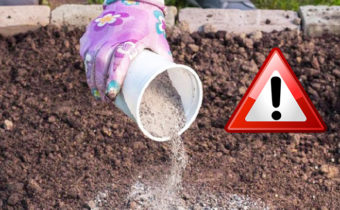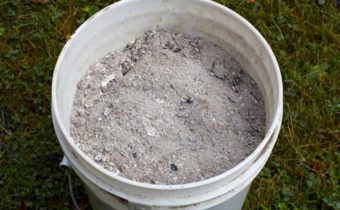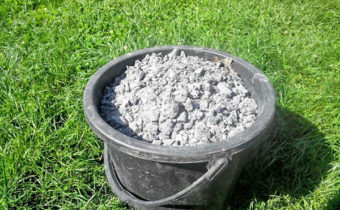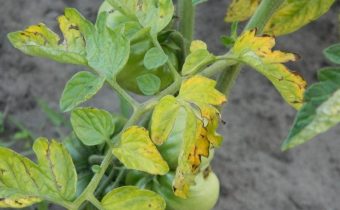When do tomatoes need saltpeter?
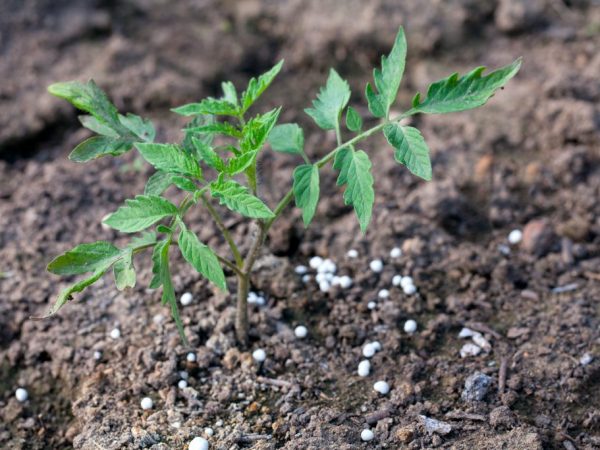
Calcium nitrate is a drug that is used in agriculture, as well as used in household plots as an effective fertilizer. Available in packages in the form of crystals and granules. Ideally soluble in water. This drug differs from many fertilizers because it contains the optimal percentage of nitrogen and calcium.
In nitrate they are present in the right amount, so the acidity of the soil remains low. This allows the substance to be used on all types of earth. Ideal for sod-podzolic soil, effectively stimulates the development of plants.
Composition and purpose
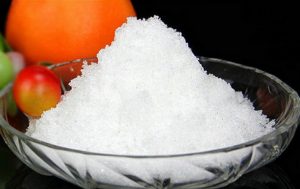
Calcium deficiency adversely affects the root system, shoots and fruits. Crops do not receive the required amount of nutrients and essential minerals. The main problem is the impossibility of water absorption by the roots. Water stagnates in the roots, and they rot. As a result, the entire balance is disturbed. This leads to the death of the whole plant.
In order to avoid negative consequences, calcium nitrate should be used in a timely manner, and dosed. When buying fertilizer, you should make sure that there is a manual that explains everything in detail. It says how much and how much water to dilute nitrate.
In agriculture, this chemical is actively used to increase crop yields. Sometimes used in construction work. Calcium nitrate is an effective and harmless nitrogen mineral fertilizer. There is nitrogen and calcium in quite small quantities.
The drug is produced by different manufacturers. Due to hermetic packaging, the shelf life is 2 years. By the way, the granules absorb less water than crystals, so they are ideal for long-term storage.
Calcium enhances nitrogen absorption. This is one of the necessary qualities of calcium nitrate used on sour soil.
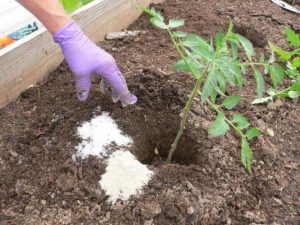 The main element in plant nutrition is nitrogen, but with a high acidity of the soil, nitrogen is poorly absorbed. Some nitrogen fertilizers acidify the soil, but calcium nitrate works differently. It actively interacts with calcium and nitrogen.
The main element in plant nutrition is nitrogen, but with a high acidity of the soil, nitrogen is poorly absorbed. Some nitrogen fertilizers acidify the soil, but calcium nitrate works differently. It actively interacts with calcium and nitrogen.
Most crops do not tolerate hyperacidity, and calcium reduces its concentration or neutralizes it altogether. The role of this chemical element in the development of plants is difficult to overestimate.
Calcium features:
- synthesizes chlorophyll;
- improves soil structure due to its ability to support the development of beneficial organisms;
- reliably neutralizes harmful microelements, and also blocks their penetration into the stems;
- stimulates seed germination;
- does not allow pests to multiply and confronts many diseases;
- activates the growth of small roots;
- strengthens plant membranes at the cellular level.
Regular feeding of crops with effective fertilizers, including calcium nitrate, significantly reduces their incidence and improves the color of fruits. However, for some plants there are limitations. Calcium is not required cranberries, blueberries, lingonberries, as well as poppy seeds, honeysuckle and Kalina.
The following crops require calcium dressing: cucumbers, tomatoes, zucchini, eggplants and peppers, beans and peas. This list is complemented by pumpkin, melon, watermelon, as well as strawberries, potatoes, cabbage.
The weight and volume of calcium nitrate is equal to the volume and weight of water. So, when calculating the dosage, the scales will not be required. The weight of one liter of fertilizer is 1 kilogram. 200 grams of saltpeter is placed in a standard cup, and 20 grams is placed in an empty matchbox.
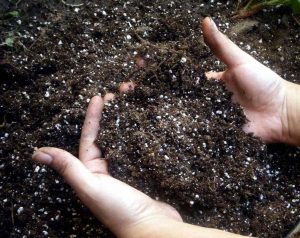 When the soil is loosening in the area or plowing fields for planting crops, dry crystals or granules are introduced into the ground. The maximum weight on a plot of 100 m² is 2500 grams. Since dry fertilizer does not harm the roots of plants, it can be applied directly to the wells before planting.
When the soil is loosening in the area or plowing fields for planting crops, dry crystals or granules are introduced into the ground. The maximum weight on a plot of 100 m² is 2500 grams. Since dry fertilizer does not harm the roots of plants, it can be applied directly to the wells before planting.
When planting cabbage and pepper, the dosage of calcium nitrate is - one dessert spoon in one hole. After sprouting shoots, they begin watering with the introduction of liquid fertilizer into the prepared soil. You will need to dissolve 20 grams of fertilizer in ten liters of water and cultivate the land of 10 m². Each bush requires 2-3 liters of liquid fertilizer.
Advantages and disadvantages
First, calcium nitrate begins to feed sprouted tomato seedlings.
On the acidic ground, calcium nitrate literally revives tomato bushes, absorbing a surplus of harmful elements that are depressingly acting on the growth process.
Features feeding tomatoes:
- acceleration of photosynthesis, positively affecting the development of bushes and fruits;
- multiple increase in yield;
- soil enrichment with calcium nitrate, accelerates seed germination many times;
- beneficial effect on the root system;
- improving the appearance of the fruit, as well as improving the taste;
- increased resistance of bushes and fruits to diseases.
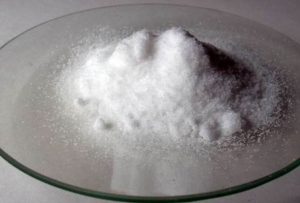 The main disadvantage of the use of calcium nitrate is an overdose or improperly maintained proportions of water and the drug. In this case, the fertilizer negatively affects the leaves and the root system. If you follow all the recommendations of experts, this will not happen.
The main disadvantage of the use of calcium nitrate is an overdose or improperly maintained proportions of water and the drug. In this case, the fertilizer negatively affects the leaves and the root system. If you follow all the recommendations of experts, this will not happen.
The main thing is not to be limited to feeding the roots, since the stems and leaves also require a weakly concentrated solution. It is necessary for the bushes during the development of the fruit, after which the spraying is stopped. The solution is prepared at the rate of 20 grams or a full matchbox of fertilizer is diluted in a liter of water. Everything is done strictly according to the instructions.
Proper preparation of the solution
The frequency of feeding and the dosage depends on the crop and sowing area. For quick feeding of tomato bushes, a liquid solution is made from calcium nitrate. You can buy liquid potassium nitrate right away. Such drugs are sold in sealed packages with proper use instructions attached to them.
If these are crystals, then for root dressing the substance is dissolved in any water, and then a volume of solution, which is indicated in the accompanying documents, is poured under each bush. For feeding after picking of seedlings, they begin a noticeable acceleration of growth.
Growing tomatoes in greenhouses, nitrogen-containing drugs are used only before flowering. During this period of time, the bushes produce a strong immunity to disease.
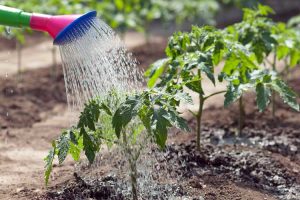 From the beginning of the planting of the seedlings to the gathering of fruits, the bushes of tomatoes are watered three times. Excessive top dressing is undesirable because a large amount of nitrates accumulates in the soil. The recommended dosage does not harm the health of plants and by the beginning of the new season disappears from the soil completely. This contributes to the abundant watering of the beds, as well as the melting of snow.
From the beginning of the planting of the seedlings to the gathering of fruits, the bushes of tomatoes are watered three times. Excessive top dressing is undesirable because a large amount of nitrates accumulates in the soil. The recommended dosage does not harm the health of plants and by the beginning of the new season disappears from the soil completely. This contributes to the abundant watering of the beds, as well as the melting of snow.
Particularly effective feeding during light drizzle. In addition, dampness contributes to the development and spread of diseases, and calcium and nitrogen do not allow to hit the stems and fruits.
In addition to tomatoes, cucumbers are fed with this fertilizer.The main thing in preparing the solution is to maintain the correct proportions. As a measure, you can use a box of matches. It contains 20 grams of crystals. Root feeding is carried out before harvesting.
Another method is spraying the bushes. The first procedure is carried out after the appearance of the third or fourth sheet. Further spraying is recommended every 10 days. This dressing develops the root system, and foliar - protects the stems from diseases.
Especially calcium needs cabbage. The first feeding is done by making the prepared composition at the root of the seedling. Cabbage grows poorly in acidic soil, and calcium nitrate is able to neutralize acid. By the way, instead of a liquid composition, in a prepared well in advance, you can place granulated nitrate. Under one bush of seedlings, one teaspoon of this substance is enough.
Instructions for use
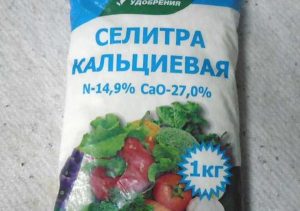 According to the instructions, calcium nitrate is applied to the soil when digging the area. This is usually done in late autumn, but many gardeners leave plowing until spring. The second option is the most correct, since spring rains and snow melt wash out some of the fertilizer ahead of time and its quality is significantly reduced.
According to the instructions, calcium nitrate is applied to the soil when digging the area. This is usually done in late autumn, but many gardeners leave plowing until spring. The second option is the most correct, since spring rains and snow melt wash out some of the fertilizer ahead of time and its quality is significantly reduced.
If necessary, calcium nitrate is used for foliar processing. The main thing, during the preparation of the solution, you need to properly maintain the recommended proportions. Despite the instructions, calcium nitrate crystals are placed in each well, because the drug can not harm the roots of seedlings, but rather strengthens them.
Security measures
Calcium nitrate is not toxic, so it can not harm health. Does not cause allergies except for people whose body even reacts to the smell of flowers. When working with this fertilizer, gardeners use conventional safety measures.
In order not to get dirty hands, it is enough to wear rubber gloves. With proper use of calcium nitrate, fertilizer bears no danger. They can be poisoned in one case, if you take a large dose inside.
Storage rules
Store calcium nitrate in compliance with safety regulations. This is a dry, damp room. It is required to be periodically aired. At a maximum temperature of 30 ° C, the humidity should not exceed 50%. Fertilizer is not recommended to be stored together with flammable substances.
Since saltpeter is sold in hermetic, waterproof packages, it is necessary to ensure the integrity of the bags before storage. The remaining crystalline or granular fertilizer is placed in glass jars and covered with nylon covers.
Recommendations
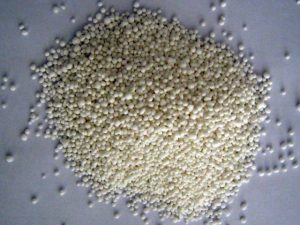 Calcium nitrate is an independent effective fertilizer, therefore it is not recommended to mix it with chalk, sawdust, straw, lime, manure.
Calcium nitrate is an independent effective fertilizer, therefore it is not recommended to mix it with chalk, sawdust, straw, lime, manure.
- It is not recommended to combine with fertilizers containing sulfur or phosphorus. However, wood ash and urea are recommended to be used together with saltpeter. These components are perfectly combined, therefore, when fertilizing crops, significantly increase the yield.
- Calcium nitrate is the most effective fertilizer for any crop. The main thing you need to know is that for perennial plants the ideal period for feeding the roots is the first half of summer, otherwise their frost resistance is reduced.
- Since calcium accelerates photosynthesis, this generally has a positive effect on the general condition of plants. The drug contributes not only to an increase in green mass, but also to the rapid development of fruits. Thanks to calcium nitrate, the yield increases many times and the presentation of the fruit improves.
- Not every crop owner knows that calcium, phosphorus, and nitrogen significantly improve plant development. Despite the nitrogen content, it does not affect the acidity of the soil.
- Calcium nitrate is equally effectively used on all types of land. As for the sod-podzolic and heavy podzolic soil, there is no saltpeter without it. If some crops show signs of excess nitrogen, then they are not fed.
If a land plot prepared for planting crops, is characterized by high acidity, then calcium nitrate granules are best placed directly in the hole. The main thing you need to know that for feeding young seedlings, enough 10 grams of the substance. The dosage is not recommended to exceed - it is better not to report. In addition, the proportions should be monitored, since excess nitrate may impair fruiting.


